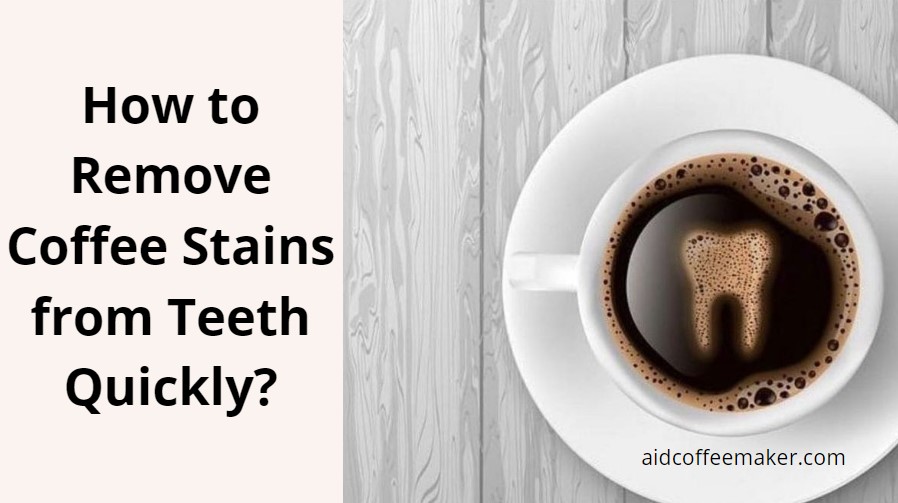
Hey there, coffee lovers! It’s Nency here, your go-to source for all things coffee. If you’re anything like me, coffee is a non-negotiable part of your daily routine. But as much as we adore our beloved brew, it doesn’t come without its downsides—namely, those pesky coffee stains on our teeth. In today’s blog post, I’m diving deep into quick and effective methods to banish those stains and keep your smile bright. Let’s get started!
Why do coffee stains appear on teeth?
Before we jump into solutions, it’s crucial to understand why coffee stains our teeth. Knowledge is power, after all!
The culprits behind coffee stains are tannins and chromogens. Tannins are natural compounds found in coffee that make it a potent staining agent. They cause the color compounds (chromogens) in coffee to adhere to your teeth more easily. This combination is what leads to that yellowish hue we’re all too familiar with.
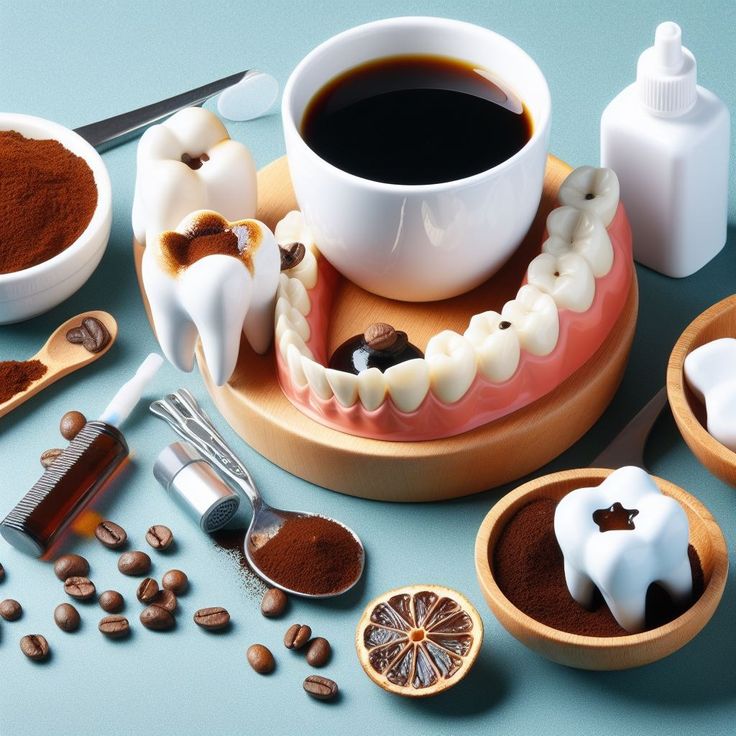
How to Remove Coffee Stains from Teeth Quickly: Professional Treatments
For those who want rapid results and are willing to invest in their smile, professional treatments are the way to go.
In-Office Whitening
Are there anyone among you who loves dentists? Oh, these guys terrify me. But you can’t live without them if you want to smile beautifully and eat deliciously. I remember the first time I tried laser whitening for coffee stains. I had a big presentation coming up and I wanted my smile to be perfect. Here’s how it went:
I made an appointment with my dentist. He immediately realized that I drink coffee every day and knew how to help me.
For laser whitening, you need to first apply a protective gel. Here I already felt my knees starting to shake.
But in fact, everything took about half an hour, maybe a little more. Without much pain. But then I was like a Hollywood star, it seemed to me that in the sun my smile was simply blinding, it was a super fast and cool result.
How to Remove Coffee Stains from Teeth Quickly: Professional Bleaching
My friend Sarah swears by professional bleaching. Here’s what she shared with me:
- She scheduled an appointment with her dentist to discuss bleaching options.
- Her dentist protected her gums with a barrier before applying the bleaching agent.
- A strong bleaching gel was applied to her teeth and left on for a specified time.
- The gel was rinsed off, and the process was repeated a few times during the session.
- She saw a noticeable difference immediately and followed her dentist’s advice for maintaining her new smile.
Dental Cleanings
Regular cleanings have been a lifesaver for me:
- I make an appointment with my dental hygienist every six months.
- During the cleaning, the hygienist uses special tools to remove plaque and tartar, which helps reduce stains.
- They polish my teeth to smooth the surface, making it harder for stains to stick.
- I maintain good oral hygiene at home with regular brushing and flossing. This routine has kept my teeth looking great between cleanings.
Read also: How to make nitro coffee?
3 Fast At-Home Ways to Remove Coffee Stains From Your Teeth
If professional treatments aren’t in the cards for you, there are plenty of effective at-home whitening options for removing stains from your teeth.
Whitening Toothpaste
I’ve tried various whitening toothpastes, and here’s what worked for me:
- I look for a whitening toothpaste with ingredients like hydrogen peroxide or baking soda.
- use the whitening toothpaste twice a day, just like regular toothpaste.
- I stay consistent with its use; results can typically be seen in a week.
- I make sure to brush for at least two minutes, covering all surfaces of my teeth.
How to Remove Coffee Stains from Teeth Quickly: Whitening Strips
Whitening strips are a favorite of mine for quick results:
- I choose peroxide-based whitening strips. I like the ones that promise visible changes in as little as three days.
- I make sure my teeth are dry before applying the strips for better adhesion.
- I apply the strips to my teeth, ensuring they cover all stained areas. I follow the instructions on the packaging for how long to leave them on.
- After the specified time, I remove the strips and rinse my mouth with water.
- I use the strips daily as directed, usually for about two weeks. The difference is always noticeable and worth the effort.
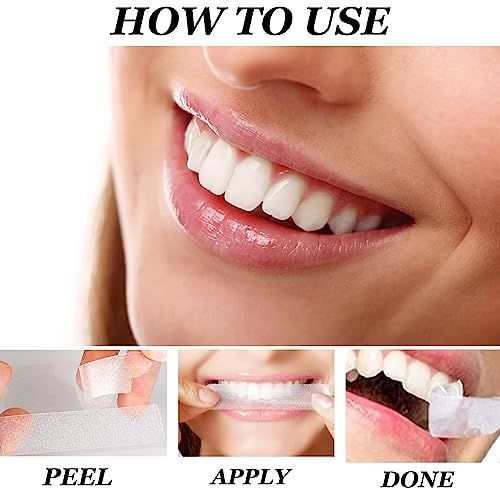
Whitening Gels
I’ve had great success with whitening gels, especially before big events:
- I buy a whitening gel kit with trays that fit my teeth. I look for ones with high concentrations of peroxide for quicker results.
- I brush and floss my teeth before application to ensure they are clean.
- I fill the trays with the whitening gel as per the instructions.
- I insert the trays over my teeth and leave them on for the recommended time, usually 30 minutes to an hour.
- After removing the trays, I rinse my mouth and the trays with water.
- I use the gel daily until I achieve my desired level of whiteness, typically over a period of two weeks.
How to Remove Coffee Stains from Teeth Naturally: 6 Best Methods
If you prefer natural remedies, there are several quick and effective methods to remove brown stains from coffee. I’ve tried many of these myself, and they can work wonders if done correctly.
Baking Soda Against Coffee Stains on Teeth
I’ve found that baking soda can be a lifesaver for quick stain removal. Here’s how I use it:
- I mix a small amount of baking soda with water to form a paste.
- I dip my toothbrush into the paste and brush my teeth gently for about two minutes.
- After brushing, I rinse my mouth thoroughly with water.
Safety Tips: Baking soda is abrasive, so I use it no more than once a week to avoid damaging my enamel. I brush gently to prevent enamel erosion.
How to Remove Coffee Stains from Teeth Quickly with Activated Charcoal
Activated charcoal is another effective remedy I’ve tried:
- I wet my toothbrush and dip it into activated charcoal powder.
- I brush my teeth gently for about two minutes.
- After brushing, I rinse my mouth thoroughly with water.
Precautions: I use it sparingly, as frequent use can wear down enamel. Also I brush gently to minimize abrasion.
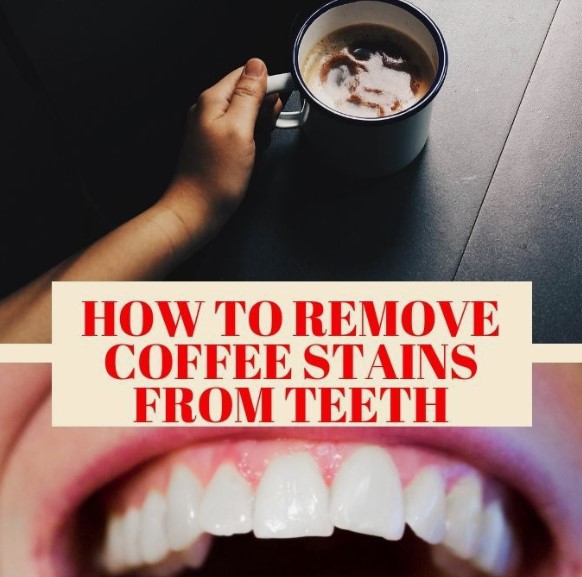
Oil Pulling for Removing Coffee Stains From Teeth
Oil pulling with coconut oil has been a game-changer for me:
- I take a tablespoon of coconut oil and swish it around in my mouth for about 15-20 minutes.
- After swishing, I spit out the oil and rinse my mouth with warm water.
- I follow up by brushing my teeth.
Process Tips: I try to do this every morning for the best results. Be sure to spit out the oil, as it contains toxins and bacteria pulled from your mouth.
Hydrogen Peroxide Can Eliminate Coffee Stains on Teeth
Using a diluted hydrogen peroxide solution is another method I’ve used:
- I dilute hydrogen peroxide with water in a 1:1 ratio.
- I swish the solution in my mouth for about 30 seconds.
- I spit it out and rinse my mouth with water.
Safe Use Instructions: Hydrogen peroxide should not be swallowed. I use this method no more than once a week to avoid irritation.
How to Remove Coffee Stains from Teeth Quickly with Apple Cider Vinegar
Apple cider vinegar can also help with stain removal:
- I dilute apple cider vinegar with water in a 1:2 ratio.
- Then I swish the solution in my mouth for about 30 seconds.
- And finally, I spit it out and rinse my mouth with water.
I use this method sparingly, as the acidity can erode enamel. I always rinse with plain water afterward.
Strawberry and Baking Soda Paste
This natural remedy is not only effective but also quite tasty:
- I mash one strawberry and mix it with half a teaspoon of baking soda.
- I apply the paste to my teeth and let it sit for about 5 minutes.
- I brush my teeth gently with the paste.
- After brushing, I rinse thoroughly with water.
Benefits and Safety Tips: I use this method occasionally to avoid damaging my enamel. As always, I brush gently to prevent abrasion.
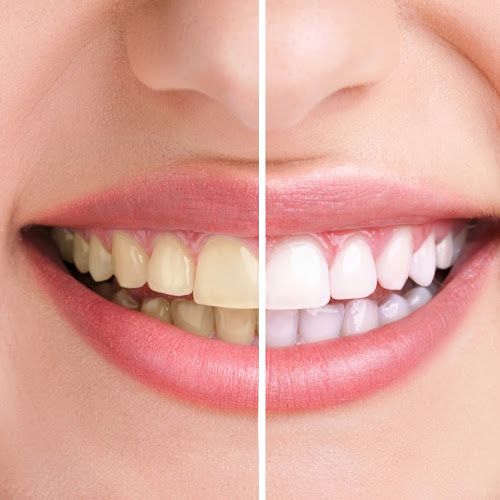
Quick DIY Methods For Whitening Coffee-stained Teeth
These methods are ideal and simple, I and many of my coffee lovers have tried them.
Hydrogen Peroxide and Baking Soda Mix
This mix is my go-to for a quick whitening boost:
- I combine one teaspoon of baking soda with a few drops of hydrogen peroxide to form a paste.
- I brush my teeth with the paste for about two minutes.
- After brushing, I rinse my mouth thoroughly with water.
I use this method no more than once a week to prevent irritation. I brush gently to protect my enamel.
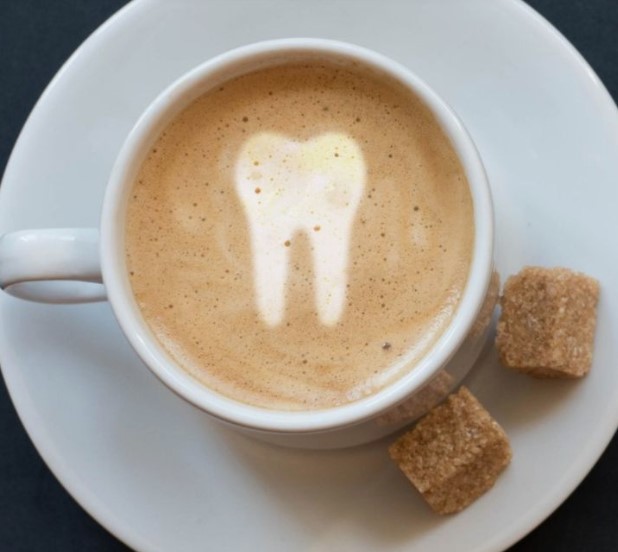
Orange or Lemon Peels
Citrus peels are a surprisingly effective natural whitener:
- I take a fresh orange or lemon peel.
- I rub the inside (white part) of the peel on my teeth for about 2-3 minutes.
- After rubbing, I rinse my mouth thoroughly with water.
I always rinse well to remove any lingering acids. I use this method occasionally to avoid enamel erosion.
Read also: What does breve mean in coffee?
My bonus for you: a convenient comparison table with all the methods
| Method | Pros | Cons |
|---|---|---|
| In-Office Whitening | Fast, professional results | Expensive, requires a dentist visit |
| Professional Bleaching | Immediate noticeable change | Can be costly, needs professional |
| Dental Cleanings | Maintains oral health, reduces stains | Requires regular dentist visits |
| Baking Soda | Inexpensive, easy to use | Can be abrasive if overused |
| Activated Charcoal | Effective stain removal | Can wear down enamel, messy |
| Oil Pulling | Natural, improves oral health | Time-consuming, daily routine needed |
| Hydrogen Peroxide | Effective, easy to find | Can irritate gums, must be diluted |
| Apple Cider Vinegar | Natural, quick results | Highly acidic, can erode enamel |
| Strawberry & Baking Soda | Tasty, natural ingredients | Occasional use, can be abrasive |
| Hydrogen Peroxide & Baking Soda | Effective combination | Can irritate if overused, abrasive |
| Orange/Lemon Peels | Natural, simple method | Acidic, can erode enamel |
| Whitening Toothpaste | Convenient, easy to incorporate | Results may take longer |
| Whitening Strips | Easy to use, visible results | Some sensitivity, may not cover all areas |
| Whitening Gels | Customizable application, effective | Requires consistent use, potential sensitivity |
Out of all the methods I’ve tried, the best is professional bleaching. It provides immediate results and is done under the supervision of a dentist. For home methods, I would choose the combination of hydrogen peroxide and baking soda. It’s effective if used carefully.
How to Remove Coffee Stains from Teeth Quickly: Preventive Measures
Regular oral hygiene is essential for preventing coffee stains:
- I brush my teeth twice a day, especially after my morning coffee.
- I make sure to floss daily and use mouthwash to maintain overall oral health.
Making small dietary adjustments can have a big impact:
- I try to limit my coffee intake or switch to lighter brews.
- I drink coffee through a straw to minimize contact with my teeth and rinse my mouth with water after drinking coffee.
Staying hydrated and rinsing my mouth with water helps:
- After drinking coffee, I rinse my mouth with water to wash away any residues.
- Drinking plenty of water throughout the day helps keep my mouth clean and reduces the chances of staining.
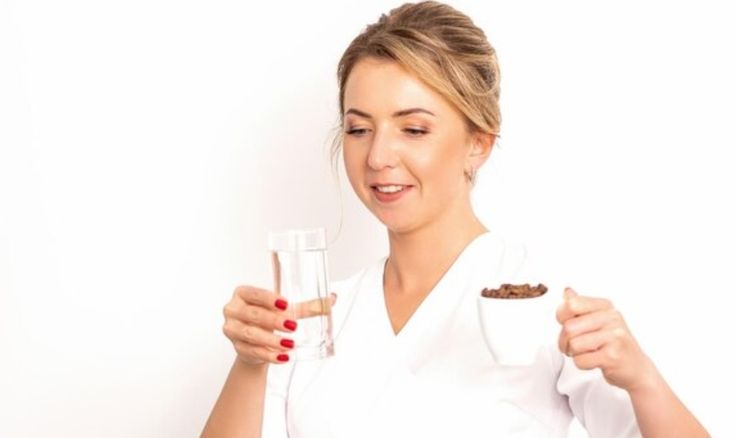
Stay tuned for more tips and tricks to keep your coffee habit from messing with your pearly whites. Until next time, happy sipping!
FAQs
How quickly can I see results with at-home whitening methods?
Results can vary, but many people see noticeable improvements within a week of consistent use.
Are coffee stains on teeth reversible?
Yes, coffee stains on teeth are generally reversible. Professional dental treatments such as cleanings and whitening, along with at-home options like whitening toothpaste and strips, can help remove and prevent coffee stains effectively.
Are natural remedies like baking soda and activated charcoal safe for daily use?
These remedies should be used sparingly, as their abrasive properties can wear down enamel if used too frequently. Once a week is generally safe.
Is coffee bad for teeth?
Coffee can contribute to dental staining due to its dark pigments, but it’s primarily acidic nature that can weaken tooth enamel over time. However, moderate consumption and proper oral hygiene can help minimize its negative effects on teeth.
What’s the best way to maintain a stain-free smile after whitening?
Maintaining regular oral hygiene, reducing coffee intake, drinking through a straw, and rinsing your mouth with water after drinking coffee are effective ways to prevent new stains.
Can professional treatments damage my teeth?
When performed by a licensed professional, treatments like laser whitening and professional bleaching are safe. Always follow your dentist’s recommendations for post-treatment care.
Conclusion
Summarizing the quick methods we’ve covered of how to remove coffee stains from teeth quickly, it’s clear that there are plenty of effective options to tackle coffee stains on your teeth. Whether you opt for professional treatments like in-office whitening and dental cleanings, at-home solutions such as whitening toothpaste and strips, or natural remedies like baking soda and oil pulling, there’s a method that can fit seamlessly into your routine.
The key is consistency and regular oral care, including brushing twice daily, flossing, and maintaining regular dental check-ups.
For those persistent stains that don’t seem to budge, consulting a dental professional is always a good idea. They can provide tailored advice and treatments to ensure your smile remains bright and stain-free.
I’d love to hear about your experiences with these whitening methods! Have you tried any of these tips? Share your results and any additional tips you have in the comments below. Let’s keep our smiles bright together!

Hello, coffee enthusiasts! I’m Nancy Gregory, a seasoned coffee sommelier eager to share the exquisite world of coffee with you. I love coffee with every fiber of my soul and I know a lot of interesting information about beans and coffee brewing methods that I want to share with you.